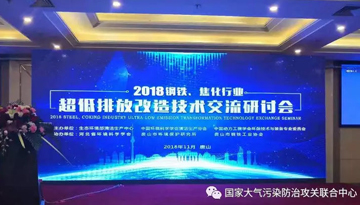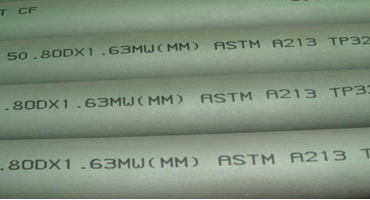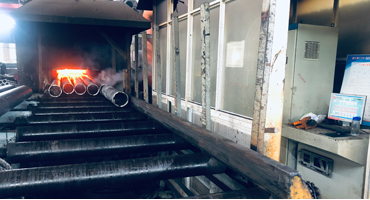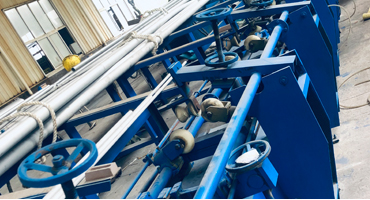
On July 26, the World Steel Association (WSA) released global crude steel production data for June. In June, 64 countries and regions in the world were included in the World Steel Association statistics for crude steel production of 159 million tons, an increase of 4.6%.
Among them, Asia's crude steel output was 116 million tons, up 7.4% year-on-year; EU crude steel output was 13.79 million tons, down 3.0% year-on-year; North American crude steel output was 9.87 million tons, down 0.2% year-on-year; South American crude steel production It was 3.56 million tons, down 3.1% year-on-year; the crude steel output in the Middle East was 3.11 million tons, up 3.5% year-on-year; the crude steel output of the CIS was 8.23 million tons, down 2.6% year-on-year.
From the first half of the year, global crude steel production in 2019 was 925.1 million tons, an increase of 4.9% year-on-year. Among them, the crude steel output in Asia was 660.2 million tons, up 7.4% year-on-year; the crude steel output in the EU region was 84.74 million tons, down 2.5% year-on-year; the crude steel output in North America was 60.13 million tons, up 1.4% year-on-year; Crude steel production was 50.5 million tons, which was flat year-on-year.
From the perspective of key countries and regions, in June, China's crude steel output was 87.53 million tons, an increase of 10.0%. India's crude steel output was 9.34 million tons, an increase of 4.0% year-on-year. Japan's crude steel output was 8.79 million tons, down 0.4% year-on-year. South Korea's crude steel output was 5.96 million tons, down 2.6% year-on-year. In the EU region, German crude steel production was 3.41 million tons in June, down 5.9% year-on-year; Italian crude steel production was 2.09 million tons, down 2.5% year-on-year; French crude steel production was 1.31 million tons, up 3.4% year-on-year; Steel production was 1.21 million tons, an increase of 2.3% year-on-year. US crude steel production in June was 7.28 million tons, an increase of 3.1% year-on-year. Brazil's crude steel output in June was 2.82 million tons, down 3.1% year-on-year. Turkey's crude steel output was 2.7 million tons, down 11.0% year-on-year. Ukrainian crude steel production was 1.66 million tons, down 3.0% year-on-year.

In order to promote the green sustainable development and transformation and upgrading of the steel industry, in-depth exchange and promotion of advanced and applicable new technologies, new processes and new equipment, and promote the transformation and application of scientific and technological innovation achievements, sponsored by the China Equipment Management Association Metallurgical Industry International Cooperation Service Center, Beijing National League Information Technology Co., Ltd. and China Metallurgical Industry Network, jointly organized by China Metallurgical Energy Conservation and Environmental Protection Co., Ltd. and Hebei Jinxi Iron and Steel Group Co., Ltd., will hold the "National Steel Industry Ultra Low Emission Technology Seminar and Supply and Demand Fair" to be held in 2019. It was held in Tangshan City on July 10th.
The contents of the conference are as follows:
Interpretation of the policy on "Improving the implementation of ultra-low emissions in the steel industry"; analysis and technical outlook of ultra-low emission policies in the steel industry; synergistic removal and control of flue gas multi-pollutants in the steel industry; desulfurization, denitrification and colored plume treatment of sintering flue gas ;
High-efficiency control of industrial furnace kiln flue gas fine particulate matter (PM2.5); third-party operation management and service of industrial soot control; research and application of energy-saving and consumption reduction of sintering pellets, efficient heat recovery and utilization of technical equipment; sensible heat of sinter vertical cold kiln Recycling power generation technology; steel industry wastewater treatment and comprehensive utilization technology, typical case analysis; intelligent closed yard construction; online monitoring of atmospheric pollutants in the whole process of steel production;
The conference will invite relevant eco-environment departments, industry associations, steel companies, quality suppliers and other units to make special reports.

The global economy may touch the apex of this round of growth cycle
After nearly 10 years of growth, global economic growth has slowed, and trade protectionism and counter-globalization trends have risen. The World Bank and the International Monetary Fund have lowered their global economic growth expectations for 2019, and the World Trade Organization has also lowered its global trade growth forecast from 3.7% to 2.6%. The direction of the economy is tainted by pessimism. The global economy may have touched the apex of this round of growth cycle and is expected to gradually enter the down phase. Globally, both developed and emerging economies have shown signs of weakening growth. Trade frictions have led to downside risks to the global economy, emerging economies are facing a new round of recession risks, and global macroeconomic policies are returning to a loose environment to nurture new risks. In 2019, the monetary policy of the world's major economies is changing, and it is likely to increase liquidity. The Fed may have interest rate cuts in the second half of the year. If global debt expansion is faster than economic output growth, it will definitely push up the leverage level, which will bring new debt bubble risks.
Recently, the McKinsey Global Institute released a report saying that China's dependence on the world economy has declined in the three key dimensions of trade, technology and capital, indicating that the Chinese economy is gradually turning to a growth model driven by domestic demand. At the same time, the world's dependence on the Chinese economy has increased. In this context, the direction of the world economy is not optimistic, and how the Chinese economy should go has become the focus of attention of all parties. From the perspective of consumption, investment and exports, although China's demand for slowing down is increasing, economic growth will continue to remain resilient.
China's economic growth will continue to maintain resilience
The role of tax reduction and fee reduction in the second half of the year will gradually be reflected, which will promote the improvement of manufacturing investment expectations. With the implementation of the limited production and de-capacity policies for many years, the upstream industrial industry is currently in a stage of restorative growth. The growth rate of real estate investment will slow down in the second half of the year, but it may still remain at a relatively high level. It may increase by about 10% in the whole year, which is obviously faster than the growth of fixed asset investment and infrastructure investment.
In the second half of the year, credit supply will still face downward pressure on the economy and the improvement in the credit status of the entity is not obvious. The timely and appropriate counter-cyclical adjustment of monetary policy will create a favorable liquidity environment for institutions to increase credit supply. Considering that the rise in institutional risk appetite is not obvious, the room for rebound in credit growth may be constrained. There is still a problem of liquidity imbalance between the current banking system institutions. It is estimated that the credit growth rate in 2019 may be around 13.5%, and the total credit for the whole year is about 18.5 trillion.
With the steady growth of credit growth and the large issuance of local government special debts, the growth rate of social welfare in the second half of the year will form a rebound trend. The annual growth rate is around 10.5%, with an increase of 21 trillion yuan. In line with the proactive fiscal policy, monetary policy may increase counter-cyclical adjustments in a timely and appropriate manner, which will have a positive impact on social growth and credit creation, and promote the growth of M2 growth.
In the short term, the focus of liquidity regulation is to alleviate the problem of bank credit stratification and liquidity imbalance. From the perspective of the effect of recent targeted support for liquidity and market reaction, it will take time to resolve the liquidity stratification problem. The money market interest rate is less affected by credit stratification. Under the policy of moderately increasing counter-cyclical adjustment, the money market interest rate operation center is expected to further decline.
In the second half of the year, China's import and export growth rate may decline, and the trade surplus of goods may narrow. The travel deficit may decline and will narrow the service trade deficit. It is expected that the current account will remain in surplus in the second half of the year, but the scale may be reduced. Under the background of the continuous strengthening of the macro and micro prudential management of the regulatory authorities and the basic stability of market expectations, the negative impact of external uncertainty will be weakened. The international balance of payments is expected to continue to maintain a double surplus pattern throughout the year.
The market expectation of the RMB exchange rate will improve, which will help the RMB to maintain a basically stable exchange rate against the US dollar. The probability of the RMB exchange rate against the US dollar will be significantly reduced during the year. As the US dollar index may be relatively weak, China's cross-border capital flows are basically balanced, and market expectations are improving, the RMB exchange rate may show a small appreciation in stages. However, due to the persistence of strong external uncertainty, the slowdown of China's economic growth and the narrowing of the current account surplus, the RMB exchange rate is difficult to continue to appreciate, and the appreciation will be limited. Need to continue to pay attention to the impact of future trade friction on the RMB exchange rate.
Macroeconomic policies must be active, steady, prudent and flexible.
Macroeconomic policies should be active, steady, prudent and flexible. Active fiscal policies should play a more counter-cyclical adjustment role in a timely and appropriate manner. From the perspective of fiscal revenue and expenditure in the first half of the year, active fiscal policies are working hard to improve efficiency. The pressure on fiscal revenue and expenditure in the second half of the year will increase, which may constrain the active fiscal policy. The local government's special debt policy can be further relaxed. After the issuance of 2.15 trillion yuan of special bonds, the special debt limit can be appropriately increased in the fourth quarter according to actual needs. It may be considered to expand the scope of special bonds as project capital. In addition to the major projects that meet the requirements, local infrastructure projects can also be applied.
In addition, monetary policy should be moderately and flexibly carried out in a timely and flexible manner to unblock the monetary policy transmission mechanism. In the case of negative externalities and significant downward pressure on the economy, monetary policy should maintain a moderate marginal loosening to stabilize growth. The expected increase in interest rate cuts in the United States has eased the pressure on domestic monetary policy adjustments. Stabilizing the exchange rate should not be a constraint to increase counter-cyclical adjustment.
At the same time, the benchmark interest rate adjustment for deposits and loans should be cautious. The fact that the benchmark interest rate has not been adjusted for a long time may not be the fundamental reason for the slow decline in corporate financing costs. As far as the current economic fundamentals are concerned, the policy effect of comprehensive adjustment of the benchmark interest rate may not be good. The current interest rate is not too hurried, and the conditions of various alternative paths are not mature enough. Considering that the benchmark interest rate for canceling deposits has a greater impact on the market, the loan pricing "replacement anchor" can be advanced. The consolidation of loan pricing can try to guide the LPR to link with policy and market interest rates, and promote the integration of the price-based monetary policy tools.

Nickel-based alloys are alloys that have a combination of high strength and certain resistance to oxidation and corrosion at high temperatures of 650 to 1000 °C.
According to the main main properties, it is divided into nickel-based heat-resistant alloy, nickel-based corrosion-resistant alloy, nickel-based wear-resistant alloy, nickel-based precision alloy and nickel-based shape memory alloy.
Superalloys are classified into iron-based superalloys, nickel-based superalloys and cobalt-based superalloys according to the matrix. Among them, nickel-based superalloys are referred to as nickel-based alloys.
Representative materials for nickel-based alloys are:
1, Incoloy alloy, such as Incoloy800, the main component is; 32Ni-21Cr-Ti, Al; is a heat resistant alloy;
2, Inconel alloy, such as Inconel600, the main component is; 73Ni-15Cr-Ti, Al; is a heat resistant alloy;
3, Hastelloy alloy, that is, Hastelloy, such as Hastelloy C-276, the main component is; 56Ni-16Cr-16Mo-4W; is a corrosion-resistant alloy;
4, Monel alloy, that is, Monel, such as Monel 400, the main component is; 65Ni-34Cu; is a corrosion-resistant alloy;
Main alloying element
The main alloying elements are chromium, tungsten, molybdenum, cobalt, aluminum, titanium, boron, zirconium and the like. Among them, Cr, Ai and the like mainly play an antioxidant role, and other elements have solid solution strengthening, precipitation strengthening and grain boundary strengthening.
It has high strength and certain anti-oxidation ability at 650~1000°C. It is widely used in the manufacture of aero-engine blades and rocket engines, nuclear reactors and energy conversion equipment due to its high high temperature strength and oxidation resistance. High temperature parts.
Development History
Nickel-based superalloys (hereinafter referred to as nickel-based alloys) were developed in the late 1930s. In 1941, the United Kingdom first produced the Ni-based alloy Nimonic 75 (Ni-20Cr-0.4Ti); in order to increase the creep strength and added aluminum, Nimonic 80 (Ni-20Cr-2.5Ti-1.3Al) was developed. In the mid-1940s, the Soviet Union developed nickel-based alloys in the late 1940s in China in the mid-1940s. The development of nickel-based alloys includes two aspects: improvements in alloy composition and innovation in production processes. In the early 1950s, the development of vacuum melting technology created conditions for the refining of nickel-based alloys containing high aluminum and titanium. The initial nickel-based alloys are mostly deformed alloys. In the late 1950s, due to the increase of the operating temperature of the turbine blades, the alloy was required to have higher high temperature strength. However, the strength of the alloy was high, and it was difficult to deform or even deform. Therefore, a series of good castings were developed using a precision casting process. High temperature strength casting alloy. In the mid-1960s, more oriented crystallization and single crystal superalloys and powder metallurgy superalloys were developed. In order to meet the needs of ships and industrial gas turbines, a number of high-chromium-nickel-based alloys with good thermal corrosion resistance and stable structure have been developed since the 1960s. In the 40 years from the early 1940s to the end of the 1970s, the operating temperature of nickel-based alloys increased from 700 ° C to 1100 ° C, an average increase of about 10 ° C per year.
Composition and performance
Nickel-based superalloys are the most widely used. The main reason is that, in the nickel-based alloy, more alloying elements can be dissolved and good structural stability can be maintained. Second, the coherently ordered A3B intermetallic compound γ[Ni3(Al,Ti)] can be formed. As a strengthening phase, the alloy is effectively strengthened to obtain higher high temperature strength than iron-based superalloys and cobalt-based superalloys; third, chromium-containing nickel-based alloys have better oxidation resistance and resistance than iron-based superalloys. Gas corrosion capacity. Nickel-based alloys contain more than ten elements, of which Cr mainly acts as an antioxidant and anti-corrosion, and other elements mainly play a reinforcing role. According to their strengthening mode, they can be divided into solid solution strengthening elements such as tungsten, molybdenum, cobalt, chromium and vanadium; precipitation strengthening elements such as aluminum, titanium, niobium and tantalum; grain boundary strengthening elements such as boron and zirconium. Magnesium and rare earth elements.
Nickel-based superalloys have solid solution strengthening alloys and precipitation strengthening alloys in a strengthened manner.
Production Process
In terms of smelting: in order to obtain more pure molten steel, reduce the gas content and harmful element content; at the same time, due to the presence of easily oxidizable elements such as Al, Ti, etc. in some alloys, non-vacuum smelting is difficult to control; more is to obtain better thermoplasticity. Nickel-based heat-resistant alloys are usually smelted in a vacuum induction furnace, and even produced by vacuum induction smelting plus vacuum self-consumption furnace or electroslag furnace remelting.
In terms of deformation: the forging and rolling process is adopted, and the alloy with poor thermoplasticity is even rolled by extrusion or directly extruded by mild steel (or stainless steel). The purpose of the deformation is to break the cast structure and optimize the microstructure.
Casting: The mother alloy is usually smelted in a vacuum induction furnace to ensure the composition and control gas and impurity content, and the parts are made by vacuum remelting-precision casting.
For heat treatment: deformed alloys and partially cast alloys are subjected to heat treatment, including solution treatment, intermediate treatment and aging treatment. Taking Udmet 500 alloy as an example, its heat treatment system is divided into four sections: solution treatment, 1175 ° C, 2 hours, Air cooling; intermediate treatment, 1080 ° C, 4 hours, air cooling; one aging treatment, 843 ° C, 24 hours, air cooling; secondary aging treatment, 760 ° C, 16 hours, air cooling. To achieve the required tissue status and good overall performance.
Nickel based corrosion resistant alloy
The main alloying elements are copper, chromium and molybdenum. Has a good overall performance, resistant to a variety of acid corrosion and stress corrosion. The earliest application (produced in the United States in 1905) is nickel-copper (Ni-Cu) alloy, also known as Monel alloy (Monel alloy Ni 70 Cu30); in addition, nickel-chromium (Ni-Cr) alloy (that is, nickel-based heat-resistant alloy) , heat-resistant corrosion alloy in corrosion-resistant alloy), nickel-molybdenum (Ni-Mo) alloy (mainly referred to as Hastelloy B series, domestic professional corrosion-resistant alloy manufacturer has Beijing Iron and Steel Research Institute, Shanghai Kangxi Special Alloy Co., Ltd. Company, Beijing Rongpin Technology Co., Ltd., Baoti Group Rare Metal Materials Co., Ltd., Nickel-chromium-molybdenum (Ni-Cr-Mo) alloy (mainly referred to as Hastelloy C series, domestic professional corrosion-resistant alloy manufacturer has Beijing Iron and Steel Co., Ltd. Research Institute, Beijing Rongpin Technology Co., Ltd., Baoti Group Rare Metal Materials Co., etc.). At the same time, pure nickel is also a typical representative of nickel-based corrosion-resistant alloys. These nickel-based corrosion-resistant alloys are mainly used in the manufacture of various corrosion-resistant environmental parts such as petroleum, chemical, and electric power.
Category Nickel-based corrosion resistant alloys have austenitic structures. In the solid solution and aging treatment state, the austenite matrix and grain boundary of the alloy also have intermetallic phases and metal carbonitrides. The various corrosion resistant alloys are classified according to their composition and their characteristics are as follows:
Ni-Cu alloy has better corrosion resistance than nickel in reducing medium, and corrosion resistance is better than copper in oxidizing medium. It is high temperature resistant fluorine gas, hydrogen fluoride and hydrogen fluoride under the conditions of no oxygen and oxidant. The best material for acid (see metal corrosion).
Ni-Cr alloy is also a nickel-based heat resistant alloy; it is mainly used under oxidizing medium conditions. Corrosion resistance to high temperature oxidation and corrosion of gases such as sulfur and vanadium increases with the increase of chromium content. These alloys also have good resistance to corrosion by hydroxides (such as NaOH, KOH) and resistance to stress corrosion.
The Ni-Mo alloy is mainly used under the conditions of corrosion of a reducing medium. It is the best alloy for hydrochloric acid corrosion, but corrosion resistance is significantly reduced in the presence of aerobic and oxidizing agents.
The Ni-Cr-Mo (W) alloy combines the properties of the above Ni-Cr alloy and Ni-Mo alloy. It is mainly used under the conditions of oxidation-reduction mixed medium. Such alloys have good corrosion resistance in high temperature hydrogen fluoride, in hydrochloric acid containing oxygen and oxidizing agents, hydrofluoric acid solution, and in wet chlorine at room temperature.
Ni-Cr-Mo-Cu alloy has the ability to resist both nitric acid and sulfuric acid corrosion, and also has good corrosion resistance in some oxidation-reduction mixed acids.
Nickel based wear resistant alloy
The main alloying elements are chromium, molybdenum, tungsten, and also a small amount of antimony, bismuth and indium. In addition to its wear resistance, it is also resistant to oxidation, corrosion and welding. It can be used to manufacture wear-resistant parts or as a coating material, which can be coated on the surface of other base materials by surfacing and spraying processes.
The nickel-based powder has a self-fluxing alloy powder and a non-self-fluxing alloy powder.
The non-self-fluxing nickel-based powder means a nickel-based alloy powder containing no B, Si or B, and a low Si content. These powders are widely used in plasma arc spray coatings, flame spray coatings and plasma surface strengthening. Mainly include: Ni-Cr alloy powder, Ni-Cr-Mo alloy powder, Ni-Cr-Fe alloy powder, Ni-Cu alloy powder, Ni-P and Ni-Cr-P alloy powder, Ni-Cr-Mo-Fe Alloy powder, Ni-Cr-Mo-Si high wear-resistant alloy powder, Ni-Cr-Fe-Al alloy powder, Ni-Cr-Fe-Al-B-Si alloy powder, Ni-Cr-Si alloy powder, Ni- Cr-W based wear resistant corrosion resistant alloy powder.
A nickel-based self-fluxing alloy powder is formed by adding an appropriate amount of B and Si to the nickel alloy powder. The so-called self-fluxing alloy powder, also known as eutectic alloy, is a series of powders formed by adding alloying elements (mainly boron and silicon) capable of forming low-melting eutectic crystals to nickel, cobalt and iron-based alloys. material. Commonly used nickel-based self-fluxing alloy powders are Ni-B-Si alloy powder, Ni-Cr-B-Si alloy powder, Ni-Cr-B-Si-Mo, Ni-Cr-B-Si-Mo-Cu, High molybdenum nickel based self-fluxing alloy powder, high chromium molybdenum nickel based self-fluxing alloy powder, Ni-Cr-WC based self-fluxing alloy powder, high copper self-fluxing alloy powder, tungsten carbide dispersed nickel-based self-fluxing Alloy powder, etc.
The role of various elements in the alloy:
● The role of boron and silicon: significantly reduce the melting point of the alloy, expand the solid-liquidus temperature zone, form a low-melting eutectic; deoxidation reduction and slagging function; harden and strengthen the coating; improve the process performance.
● The role of copper: improve the corrosion resistance of non-oxidizing acids.
●The role of chromium element: solid solution strengthening, passivation; improve corrosion resistance and high temperature oxidation resistance; excess chromium easily forms carbon carbide, chromium chromic hard phase with carbon, boron to improve alloy hardness and wear resistance Sex.
●The role of molybdenum element: large atomic radius, large distortion of the crystal lattice after solid solution, significantly strengthening the alloy matrix, improving the high temperature strength and red hardness of the matrix; cutting and reducing the network structure in the coating; improving gas resistance Nickel-based precision alloy for etch and erosion.
Including nickel-based soft magnetic alloy, nickel-based precision resistance alloy and nickel-based electrothermal alloy. The most commonly used soft magnetic alloy is a permalloy containing about 80% nickel, which has a high maximum magnetic permeability and initial magnetic permeability and a low coercive force, and is an important core material in the electronics industry. The main alloying elements of nickel-based precision resistance alloys are chromium, aluminum, and copper. These alloys have high resistivity, low resistivity temperature coefficient, and good corrosion resistance for making resistors. Nickel-based electrothermal alloy is a nickel alloy containing 20% chromium. It has good oxidation and corrosion resistance and can be used for a long time at 1000~1100 °C.
Nickel-based shape memory alloy
A nickel alloy containing 50% (at)% of titanium. Its recovery temperature is 70 ° C, shape memory effect is good. A small change in the proportion of nickel to titanium components allows the recovery temperature to vary from 30 to 100 °C. It is mostly used to manufacture self-expanding structural parts used in spacecraft, self-exciting fasteners for the aerospace industry, artificial heart motors used in biomedical applications, and the like.

Since ball valves typically use rubber, nylon, and Teflon as the seat seal material, their service temperature is limited by the material of the seat seal. The cut-off function of the ball valve is achieved by the metal ball being pressed against the plastic seat under the action of the medium (floating ball valve). The valve seat seal is deformed by elastic deformation in a local area under a certain contact pressure. This deformation can compensate for the manufacturing precision and surface roughness of the sphere and ensure the sealing performance of the ball valve. Since the valve seat seal of the ball valve is usually made of plastic, in the structure and performance of the ball valve, the fire resistance and fireproof of the ball valve should be considered, especially in the petroleum, chemical, metallurgical and other departments, in the flammable and explosive medium. The use of ball valves in equipment and piping systems should pay more attention to fire and fire protection. Usually, the two-position adjustment, strict sealing performance, mud, wear, shrinkage passage, quick opening and closing action (1/4 turn open and close high pressure cutoff (large differential pressure), low noise, cavitation and gasification, to the atmosphere Ball valves are recommended for piping systems with small leakage, low operating torque and low fluid resistance. Ball valves are also suitable for use in light piping, low pressure cut-off (small differential pressure), corrosive media piping systems. Ball valves are also available in the installation and piping systems. In the oxygen piping system of the metallurgical industry, ball valves that have been strictly degreased are used. The main lines in the oil and gas pipelines need to be buried underground. Full-bore welded ball valve. When required to have adjustment performance, a ball valve with a special structure with a V-shaped opening is required. In petroleum, petrochemical, chemical, electric power, urban construction, the piping system with a working temperature above 200 °C Metal-to-metal sealed ball valves are available.
2019-08-05
Hastelloy, nickel-based corrosion-resistant alloy; mainly divided into nickel-molybdenum alloy and nickel-chromium-molybdenum alloy. Use Hastelloy plates are suitable for a variety of chemical industries containing oxidizing and reducing media. The higher molybdenum and chromium contents make the alloy resistant to chloride ion corrosion, and the tungsten element further improves the corrosion resistance. At the same time, C-276 Hastelloy tube is one of only a few materials resistant to moisture chlorine, hypochlorite and chlorine dioxide. It has high concentration of chloride solution such as ferric chloride and copper chloride. Significant corrosion resistance. Application areas, heat exchangers, bellows compensators, chemical equipment, flue gas desulfurization and denitrification, paper industry, aerospace applications, acidic environments.
characteristic
1 Excellent corrosion resistance for most corrosive media in both oxidizing and reducing atmospheres.
2 Excellent resistance to pitting, crevice corrosion and stress cracking corrosion.
Address:
No. 17, West Zone, Xiangyun Road, Jixi County, Xuancheng, Anhui, China
Contact: MR TOM
CELL: 15868588652
Tel: 0577-86887759
Fax :0577-86887759
Email: tom123631@163.com
SKYPE: tongwenguan813